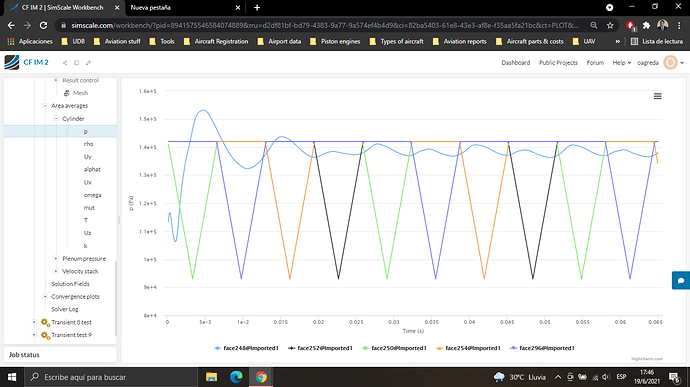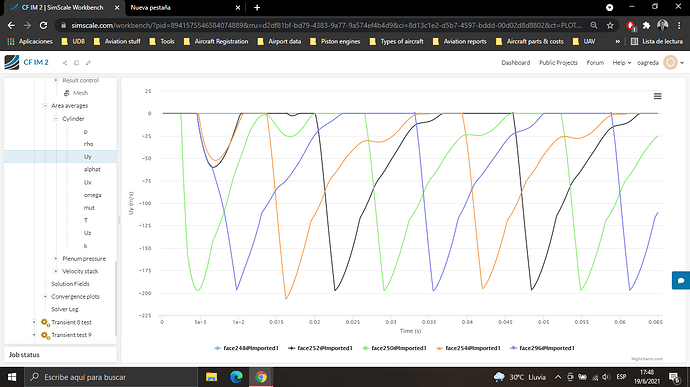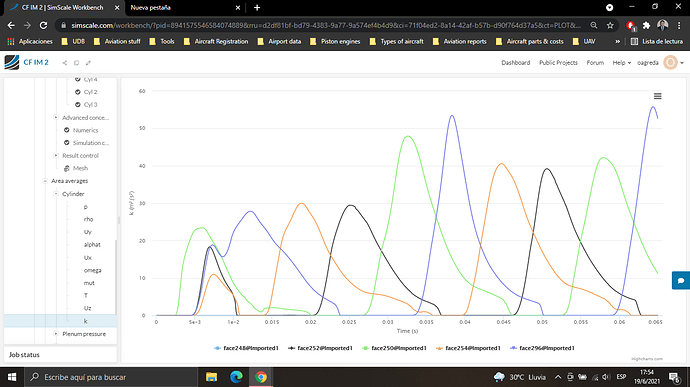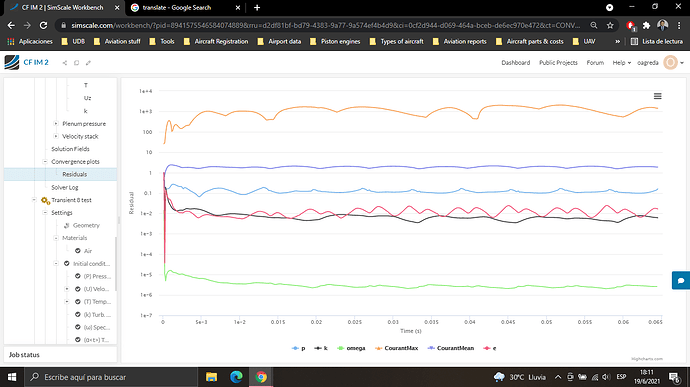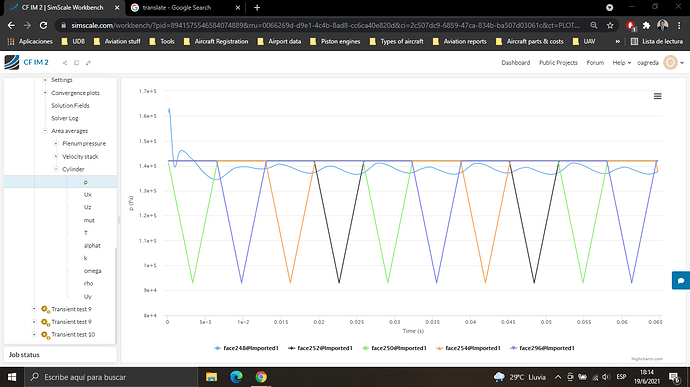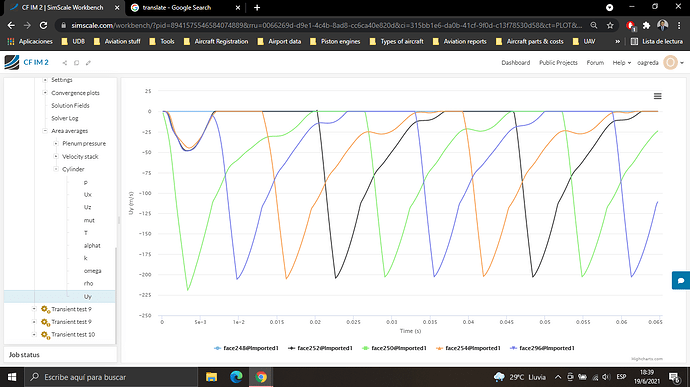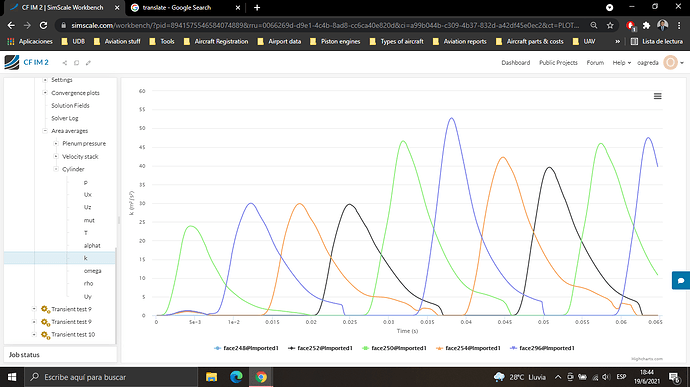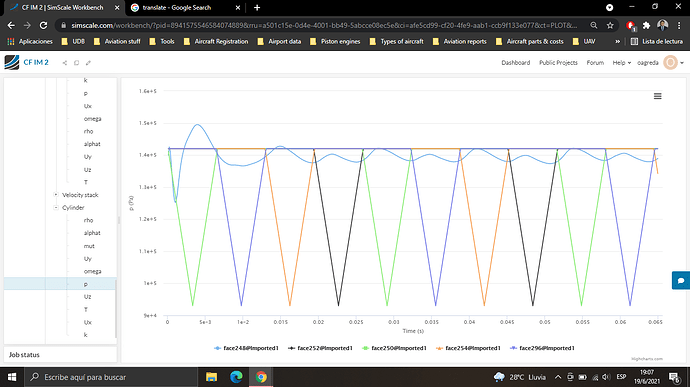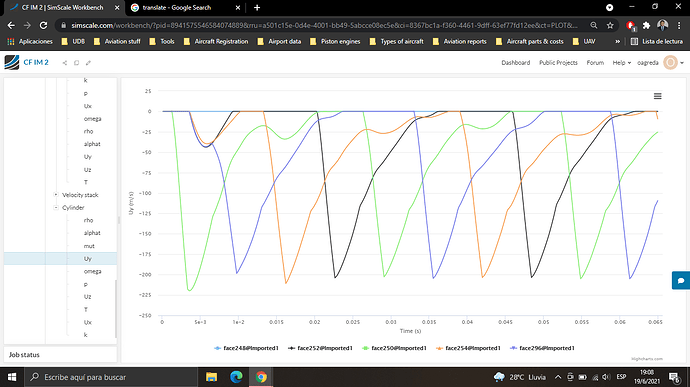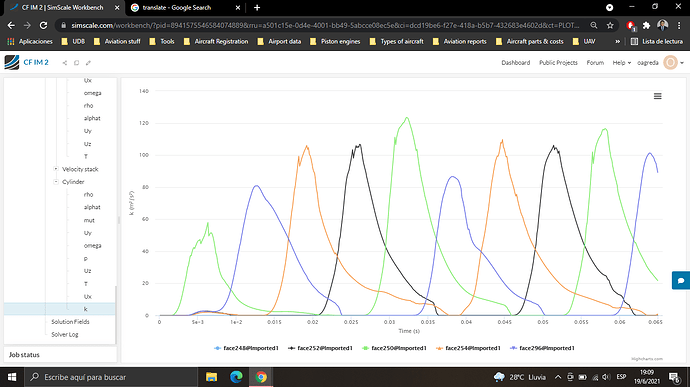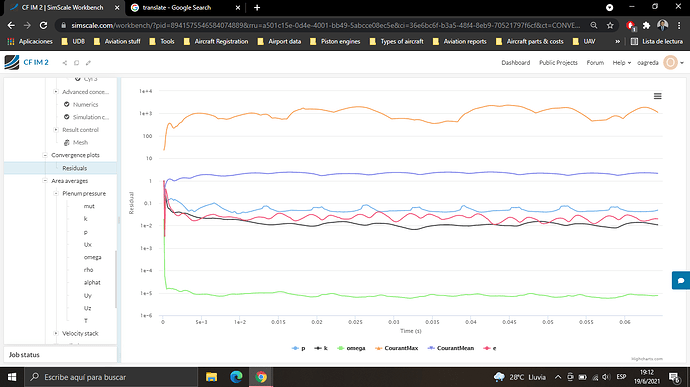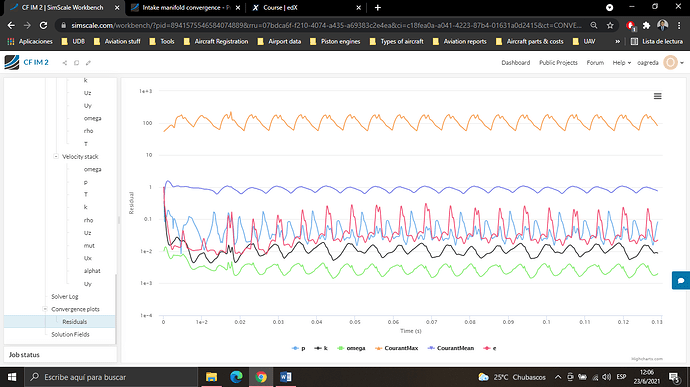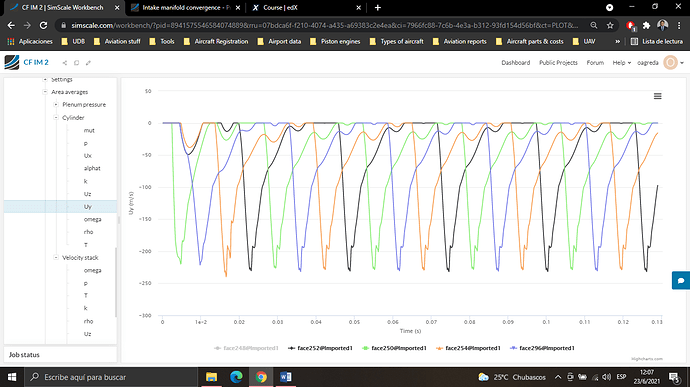LINK OF THE PROJECT: https://www.simscale.com/workbench/?pid=8941575546584074889&mi=spec%3A28d13863-0adc-43ff-a753-6099ef70b4ff%2Cservice%3ASIMULATION%2Cstrategy%3A331
Hi, I’m doing a transient analysis for an Intake manifold, I’m studying air performance in the intake for the cylinder heads in the fire order of 1 - 4 - 2 - 3. In the compressible 9 section, I did some transient analysis from ‘transient test 1 to 6’ and failed, maybe my mesh was to fine so I read that reducing the number of cells not to coarse will help, so It started to work for me. From ‘transient test 7 to 10’, each analysis stopped because the runtime over (community plan), but I achieved the pressure pulse of each cylinder and the velocity profile. I will show you my doubts.
Transient test 7:
- I added 4 non-orthogonal correctors ( <75 degrees).
- I changed the relaxation factor of the density field to 0.01 (I don’t know why some public projects for transient simulation add this value but I just copied
 ).
). - I changed the scheme of gradient to Celllimited Gauss linear 1) because I read in a OpenFoam tips that for standard mesh the LeastSquares generate oscilatory data).
- The time step it’s low because I’m analyzing the engine performance at 5800 RPM and the valve opens and closes it’s fast.
Pressure pulse in the cylinder and inlet:
Note: The overshoot in the inlet pressure, I used Flow rate because I’m using that design parameter.
Velocity profile:
Note: Ends because the runtime it’s not the total end time (0.1289)
Turbulent Kinetic energy:
Note: Appeared to be increasing in time, not periodic.
Residuals:
Transient test 8:
CHANGES IN THE NUMERICS:
- I changed the relaxation factors to increase convergence, p=0.4, U=0.8, ρ=0.01, h=0.8, e=0.8, k=0.8 and ω=0.8.
- I write the initial condition for pressure: 142 kPa It’s the pressure for my pressure pulse.
Pressure pulse in the cylinder and inlet:
Note: The pressure in the inlet overshoot at the start but stabilizes faster.
Velocity profile:
Note: Ends in nearly the same time step, and the velocity data per cylinder increases the magnitude.
Turbulent kinetic energy:
Note: Improved the turbulent energy in the start.
Residuals:
Transient test 10:
CHANGES:
- Initial pressure condition to 125 kPa.
- I changed the relaxation factors to increase convergence, p=1, U=0.9, ρ=0.01, h=0.9, e=0.9, k=0.9 and ω=0.9.
- I changed the divergence scheme in div(phi,U) to Gauss linear upwind limited grad.
Pressure pulse:
Note: Pressure inlet overshoot less.
Velocity profile:
Note: Ends in the same range.
Turbulent kinetic energy:
Note: Increases a lot and fluctuates a little beat in the peaks.
Residuals:
RESUME:
So, I don’t figure it out how to speed up the convergence to reach more time steps for mi end time, I tried to change the solver of velocity, enthalpy, internal energy, k and w to PBiCG but made it slower I canceled the run…
If you can help me to set better my numerics in the relaxation factor, the solvers and the schemes.
NOTE: In compressible 8, the steady state runs for Cyl 1 open N12 v7 to Cyl 4 open N12 v7, in average 1 are the solution for the cylinders, y changed a little bit the cad for compressible 9 but not too much.

